When I started out my undergraduate work in education, I did not plan to focus my energies on English Language Learners. I actually started in a dual major program at New Mexico State University in an attempt to be certified in Elementary Education and Special Education. After two years I moved to Kennesaw State University, which did not have Bachelor's program in Special Education. So I decided to get my Bachelor's in Elementary Education with the plan of returning and getting a Master's in Special Education. However, as often happens in life, things went in a slightly different direction.
My first year of teaching I had a student who changed the way I looked at life. He had come from Argentina by way of China. He had moved around a lot and had not always been in school. He came to me as a third grader with about one year of total school experience and an incomplete grasp of both Mandarin and Spanish. For two months all I ever heard from him was "Teacher, bathroom?" He hid in the bathroom to get away from the stress that was my classroom. But by the end of the year he talked non stop to all of his friends, in English. Watching him learn English was amazingly inspirational. It changed the way I looked at teaching.
Teaching this student also allowed me to understand my husband in a new and different way. My husband (who blogs at Raki's Rad Language Resources) speaks five languages. English is the last language he learned and when we got married he had only been speaking English for a little over a year. I knew that he was learning the language, but I didin't really appreciate what that meant until I had the opportunity to really work with someone who had no English. It was then that I realized how amazing language learning is.
From this point forward, I started doing research on my own about language learning. I participated in a Sheltered Instruction for Other Programs (SIOP) training to learn about how to teaching ESL students while still teaching your standards. I studied and took the test to add the ESOL endorsement to my teaching certificate. But most importantly I taught ESL students.
Because of my growing interest in ESL, my school "cluster grouped" the ESL students into my room. Working with these students taught me more than any article or book I read. I learned to differentiate between which students could and couldn't read in their home language, and what differences that made in how they learned. I learned that they mimicked my own accent as they were learning to pronounce words. I learned that students needed to know how to say "I need a pencil." before we could think about working on content.
Then of course we made the infamous move to Morocco. When I moved to Morocco I thought I was really good at teaching ESL, and I had a good base. But the needs of my students in Morocco were so much more intense because I was literally the ONLY English many of my students got. In the US my students had exposure to t.v. shows, movies, store clerks and bus drivers who spoke English. In Morocco when my kids walked out of the door they often didn't hear another word of English until they walked back in it. This teaching experience is when I really started to refine my instructional strategies. Three years of watching my students go from "I need pencil." to talking my ear off and reading on level taught me so much.
While I was teaching in Morocco, I blogged about the process in an effort to share the strategies I was learning with other teachers. Since I have been back in the US homeschooling I haven't blogged about these strategies, but I have used them. My sons complete school work every day in English, French and Arabic. Since French and Arabic are not their home language, they need the same kinds of strategies that I used for teaching my English Language Learners. Realistically the strategies I learned are Language Acquisition Strategies, not English Language strategies.
It's been awhile since I blogged about language learning, but I have a ton of TESOL Teaching Tips here on the blog. Here are the 55 tips that I think are the most important for teaching someone who is learning the language. Each of these strategies have been explained further with the blog post that is linked here.
1.) Use images
2.) Speak slowly
3.) Let students talk!
4.) Correct their mistakes - sometimes!
5.) Teach vocabulary every day
6.) Repeat yourself often
7.) Teach kids HOW to listen
8.) Find what your students' literacy level is
9.) Know a few key words in their home languages
10.) Understand cultural effects of language
11.) Teach inferencing
12.) Teach body language
13.) Utilize background knowledge
14.) Find a way to communicate with families
15.) Use technology
16.) Teach social expectations
17.) Teach a lot of grammar
18.) Understand the silent period
19.) Appreciate the differences of how students learn
20.) Use peer tutors - sometimes
21.) Teach non language learners about language learning
22.) Use best practices
23.) Explore culture shock
24.) Expect language growth to cycle
25.) Learn a language yourself
26.) Teach cognates
27.) Know how long your students have been learning English
28.) Give context clues
29.) Know your kids
30.) Explain the connections
31.) Let them count in their home language
32.) Graph out student understandings
33.) Allow transition time after breaks
34.) Use teachable moments
35.) Know why they're learning English
36.) Understand how listening happens
37.) Use the media
38.) Find the gaps
39.) Teach common culture
40.) Practice writing a lot
41.) Teach prepositions and positional words
42.) Teach verb conjugation
43.) Put yourself in their shoes
44.) Appreciate how dialect changes languages
45.) Teach taboo words
46.) Explain your read alouds
47.) Let students create videos
48.) Some students need alphabet help
49.) Use regalia and videos
50.) Talk about home life with your students
51.) Remember that summer limits English exposure
52.) Encourage students to maintain their home language
53.) Include ESL students in whole class discussions
54.) Give students alternatives to presenting in front of class
55.) Create procedures for using translation apps
Do you have any tips for teaching TESOL?








































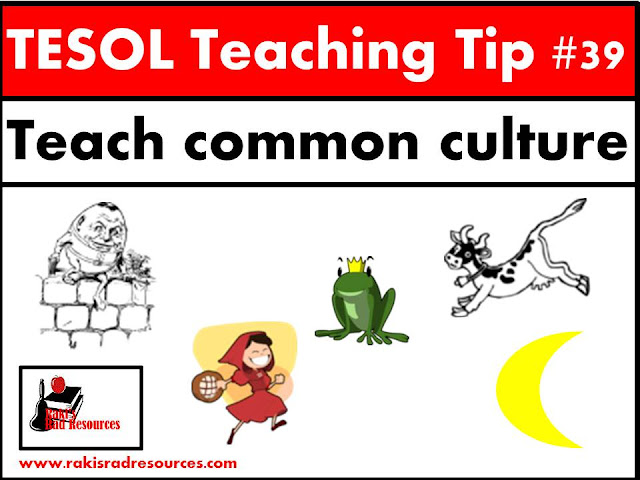
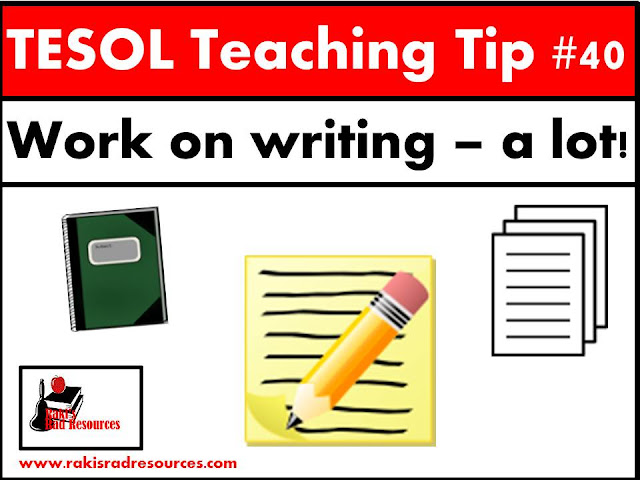
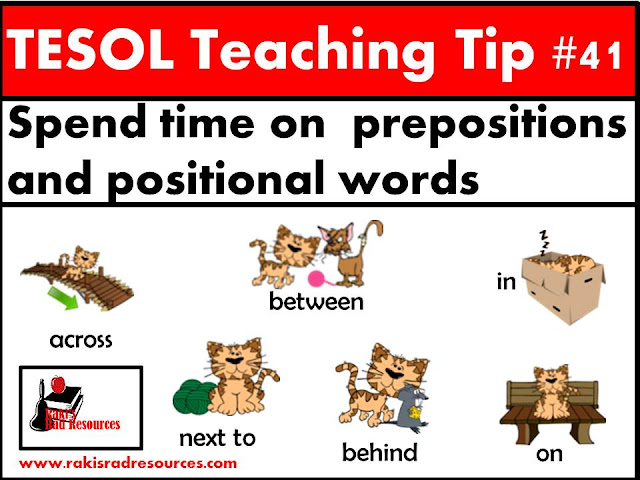



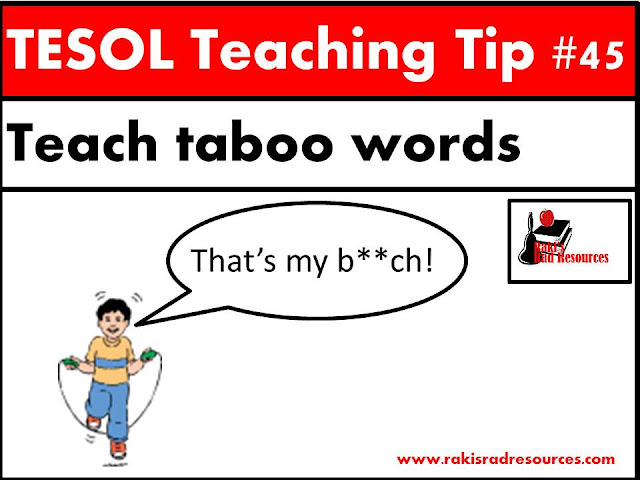








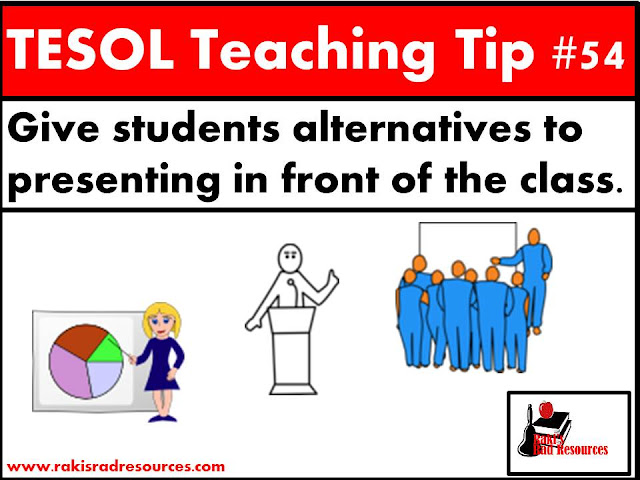
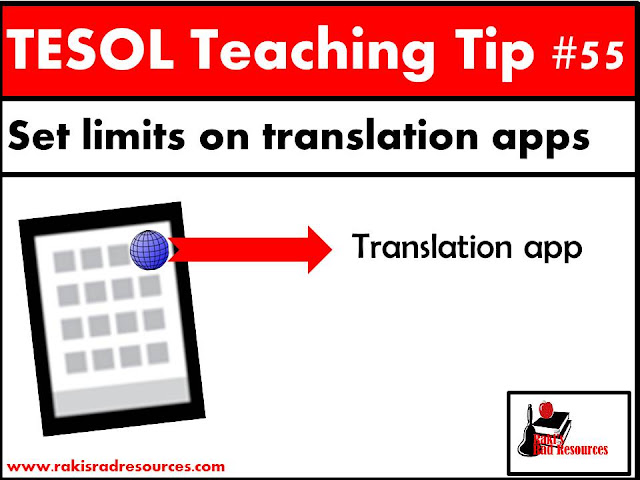

No comments:
Post a Comment